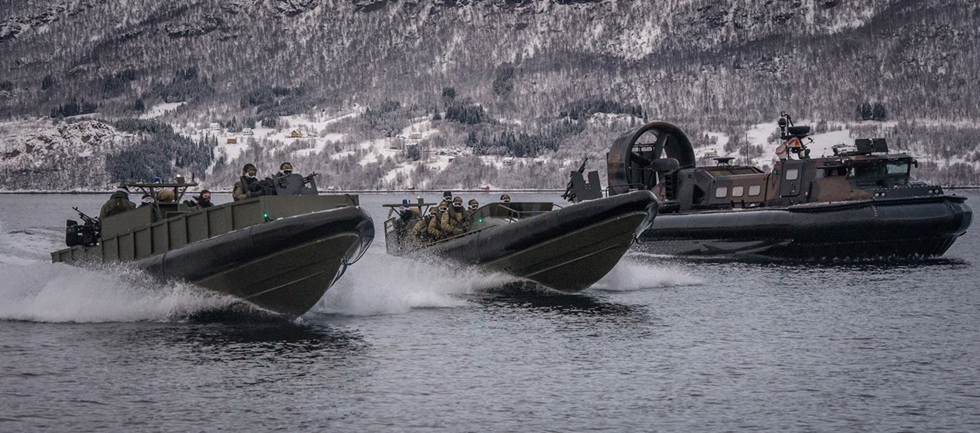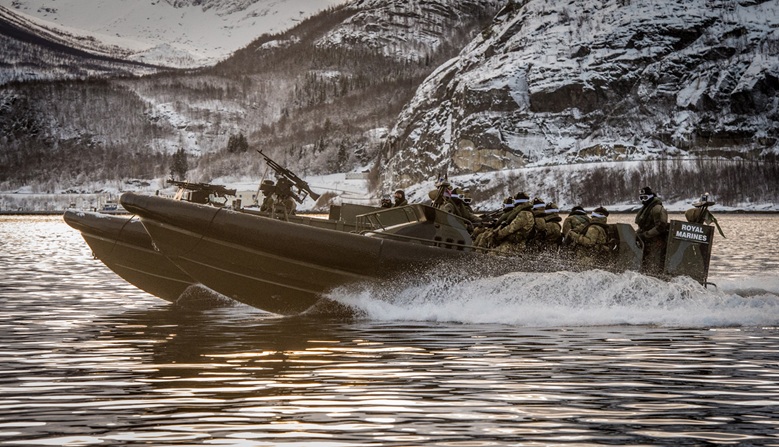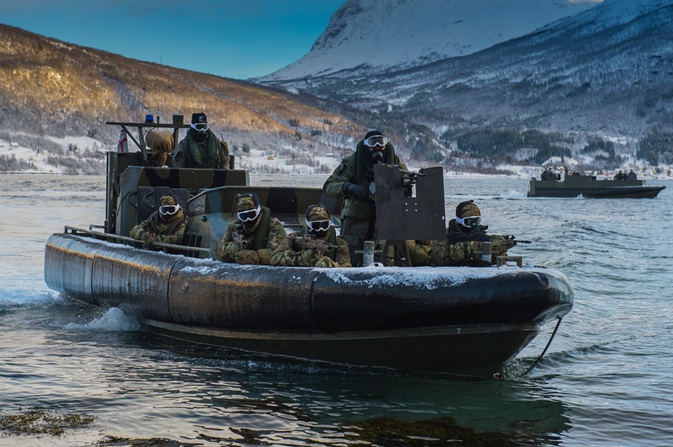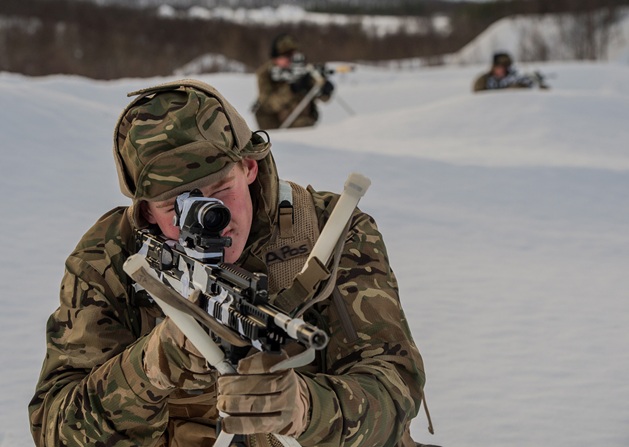The crack of rifle fire and the roar of motor engines rebounded off the snow-covered fjords of northern Norway as Royal Marines prepared for NATO’s biggest winter war games.
Fast raiding craft and hovercraft have been tearing up and down the inlets around the port Harstad – more than 150 miles inside the Arctic Circle – as the men of 539 Assault Squadron get used to freezing conditions.
More than 50 commandos from the squadron, based at RM Tamar in Devonport Naval Base, have deployed to northern Norway with their ORC offshore raiding craft and Landing Craft (Air Cushioned) – hovercraft to the general public, or LCACs (“el cack”) in everyday Royal Marines parlance.
The eight weeks of training opened with the boat crews learning how to survive and operate as marines in the harsh Arctic conditions at Åsegarden camp outside Harstad.
Alongside their comrades from Kilo Company, 42 Commando, from Bickleigh outside Plymouth, the 539 men were taught basic survival skills by Royal Marines Mountain Leaders – the Corps’ specialists in cold-weather warfare – moving on to moving around using skis and snowshoes and finally fighting in the rugged, snow-laden terrain in temperatures as low as -30˚C.
Once acclimatized, the marines could move on to the business of amphibious operations; the squadron is expected to put Royal Marines ashore by landing or raiding craft whatever the climate.
The ORCs can carry a dozen commandos and reach speeds over 30kts, while the hovercraft can carry 16 Royal Marines or two 1,000kg pallets of kit, gliding over water as fast as 35kts.
Normally, such missions are carried out stealthily – but the squadron can also provide covering fire courtesy of heavily-armed ORCs Gatling guns and 40mm grenade launchers.
And should anything go wrong ashore, the boat and hovercraft crews are expected to ferry casualties to a first-aid post or field hospital.
Two weeks have been set aside to learn the art of operating the craft in the Arctic – from the challenges of navigation (one snowy fjord with a rocky shore looks very much like another) to driving the hovercraft over ice, conducting long-range patrols and dropping and picking up reconnaissance parties.
“One of the toughest parts of operating in these conditions is the cold; you don’t really realise how cold it is until you get out here – and when you add the wind chill factory from travelling at 35 knots on the fjords, you really can feel it,” said hovercraft coxswain Marine ‘Tommo’ Thompson.
Marine Alex Foster, a landing craft coxswain, added: “The snow and ice make things very challenging, very different from the conditions which were used to working in. It’s a completely different world from operating on beaches in the UK.
“It’s surprising how cold it gets when the sun goes down – which is very early in the afternoon. That’s when we really have to look after our guys.”
Once 539’s initial training package is completed, the squadron will embark six of its ORCs on the Dutch assault ship HMNLS Rotterdam which is heading to Norway for NATO’s Cold Response 2016.
The exercise, which begins soon, will see 15,000 personnel from across the alliance practicing the art of Arctic warfare by land, sea and air.
Images taken by Petty Officer (Photographer) Donny Osmond.





